|
|
Reply mencacus
hye...
hari yg dtunggu2 makin tibe...
midory Post at 6-6-2011 22:16 
saat2 yang ditunggu hampir tiba ....tak sabar dah nie .... |
|
|
|
|
|
|
|
|
|
|
|
saat2 yang ditunggu hampir tiba ....tak sabar dah nie ....
mencacus Post at 7-6-2011 21:49 
sabar2..  |
|
|
|
|
|
|
|
|
|
|
|
Reply 103# midory
salah tempat nie midory ....kita pergi ke thread gerhana , sini galaksi .... |
|
|
|
|
|
|
|
|
|
|
|
satelit yang paling jauh stakat ini ialah voyager 1 , skrg nie sudah berada luar dari sistem s ...
mencacus Post at 7-6-2011 21:45 
Ok...next que. Seperti yang kite tahu buruj2 adalah kumpulan bintang kan? Bintang2 yang membentuk buruj ni dari galaksi berlainan or galaksi yang sama? |
|
|
|
|
|
|
|
|
|
|
|
Ok...next que. Seperti yang kite tahu buruj2 adalah kumpulan bintang kan? Bintang2 yang memben ...
Limao Post at 10-6-2011 21:44 
yup , kumpulan bintang .....kumpulan bintang2 nie masih berada di dalam galaksi bima sakti ......

gambar di atas adalah pemetaan sempadan2 di dalam galaksi bima sakti |
|
|
|
|
|
|
|
|
|
|
|
Reply 106# Limao

rasanya yang nie betul ... |
|
|
|
|
|
|
|
|
|
|
|
mencacus...
galaksi bima sakti semakin mengembang atau mengecut? ada kemungkinan boleh bertembung ngan galaksi lain tak? |
|
|
|
|
|
|
|
|
|
|
|
mencacus...
galaksi bima sakti semakin mengembang atau mengecut? ada kemungkinan boleh bertembung ...
LongKai Post at 17-6-2011 00:51 
bergantung dengan daya tarikan graviti di pusat bima sakti ( graviti lubang hitam di pusat amat tinggi menyebabkan bintang2 mengorbit di sekitarnya ) ....mengikut kajian NASA , bima sakti akan bertembung dengan andromeda ..... |
|
|
|
|
|
|
|
|
|
|
|
galaxy ni jugak yg paling takjub
 |
|
|
|
|
|
|
|
|
|
|
|
galaxy paling besau..most expansive : IC 1101
hiway_5_lane Post at 17-6-2011 12:35 
terima kasih hiway for sharing ..... |
|
|
|
|
|
|
|
|
|
|
|
aku tolong tepekkan gambar .....

The Abell 2029 galaxy cluster in visible light (right) and IC 1101 in X-ray (left).

IC 1101 on DSS2, 0.1° view |
|
|
|
|
|
|
|
|
|
|
|
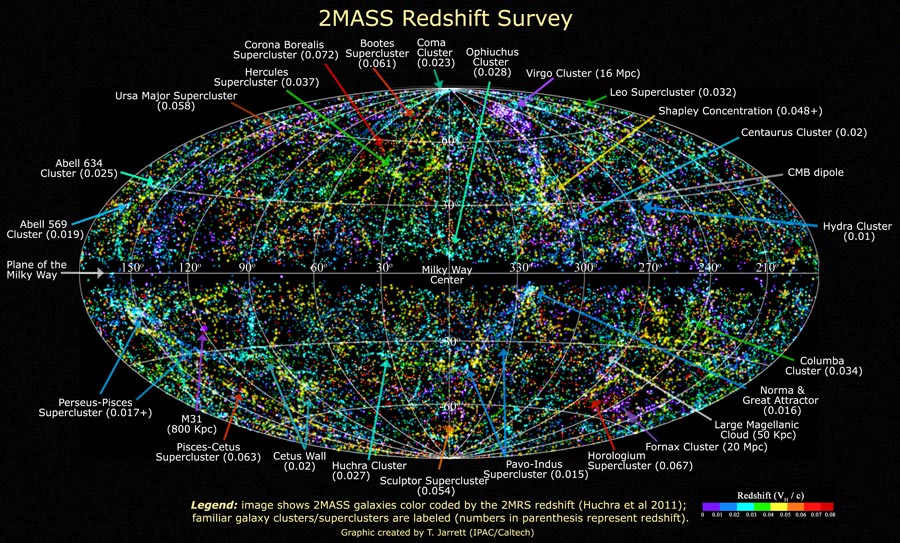
This plot shows nearly 50,000 galaxies in the nearby universe detected by the Two Micron All Sky Survey (2MASS) in infrared light. |
|
|
|
|
|
|
|
|
|
|
|
Reply 116# onlinetrader
history channel kat astro ada mention tentang pemetaan alam semesta ......dokumentari tu namanya 'universe' ..... |
|
|
|
|
|
|
|
|
|
|
|
antara kuman dengan manusia dengan alam semesta dengan ruang infiniti..
maha hebat pencipta nya. |
|
|
|
|
|
|
|
|
|
|
|
apa yang ada di atas sana...
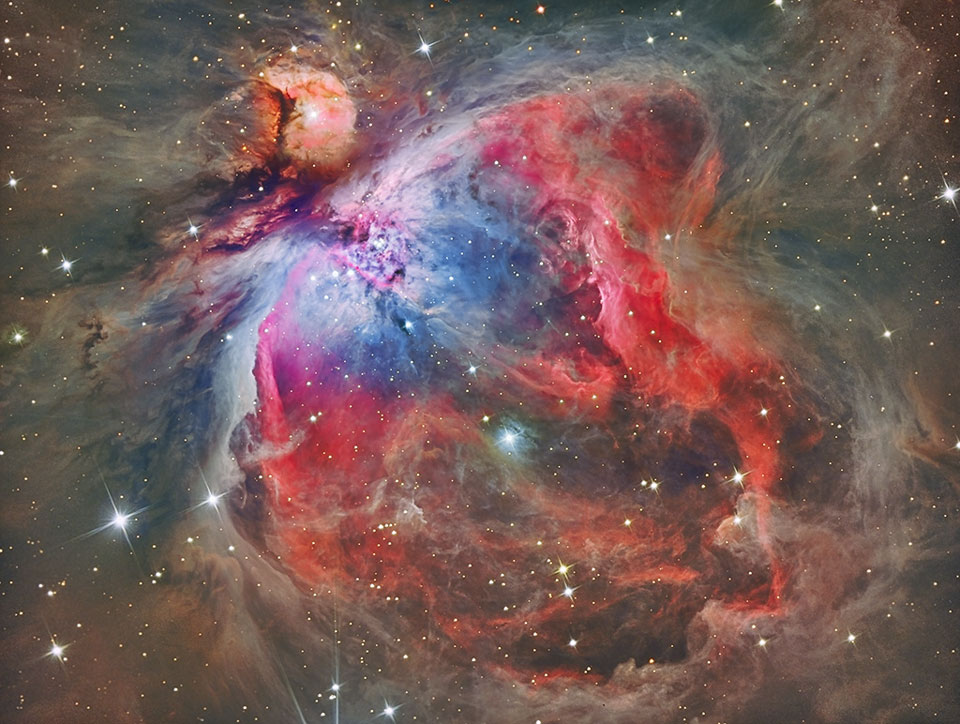
The Great Nebula in Orion, an immense, nearby starbirth region, is probably the most famous of all astronomical nebulas. Here, glowing gas surrounds hot young stars at the edge of an immense interstellar molecular cloud only 1500 light-years away. In the above deep image in assigned colors highlighted by emission in oxygen and hydrogen, wisps and sheets of dust and gas are particularly evident. The Great Nebula in Orion can be found with the unaided eye near the easily identifiable belt of three stars in the popular constellation Orion. In addition to housing a bright open cluster of stars known as the Trapezium, the Orion Nebula contains many stellar nurseries. These nurseries contain much hydrogen gas, hot young stars, proplyds, and stellar jets spewing material at high speeds. Also known as M42, the Orion Nebula spans about 40 light years and is located in the same spiral arm of our Galaxy as the Sun.
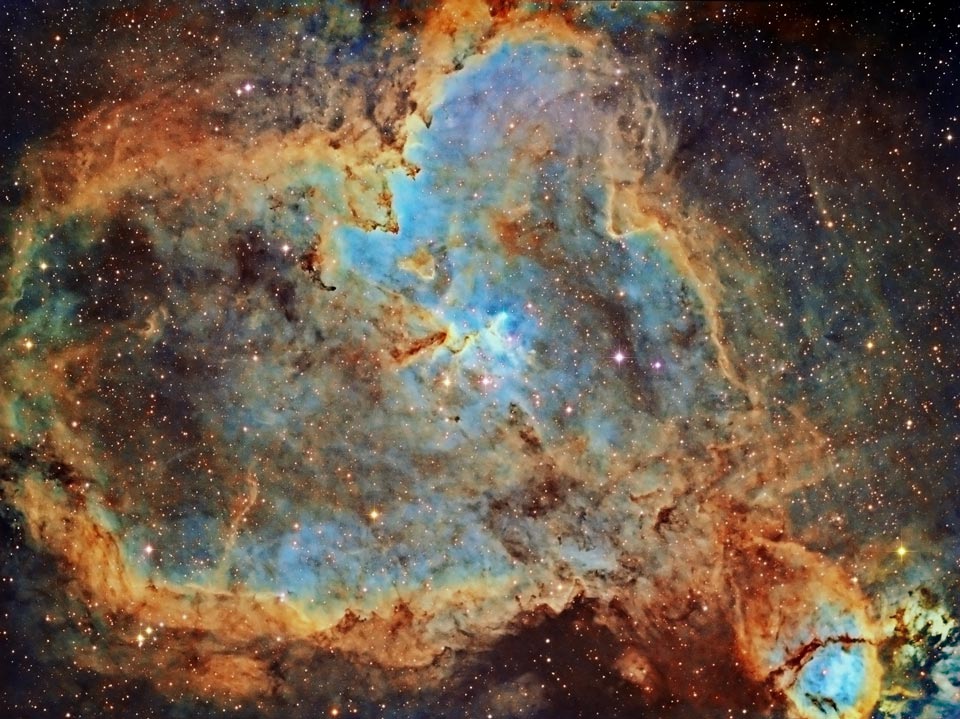
Sprawling across almost 200 light-years,emissionnebula IC 1805is a mix of glowing interstellar gas and dark dust clouds.Derived from itsValentine's-Day-approved shape,its nickname is the Heart Nebula.About 7,500 light-years away in thePerseus spiral arm ofour galaxy, stars were born in IC 1805.In fact, near thecosmic heart's center are themassive hot stars of a newborn star clusteralso known as Melotte 15, about 1.5 million years young.A little ironically, the Heart Nebula is located in the constellation of the mythical Queen of Aethiopia (Cassiopeia).This deep view of the region around the Heart Nebula spans abouttwo degrees onthe sky or about four times the diameter of the Full Moon.
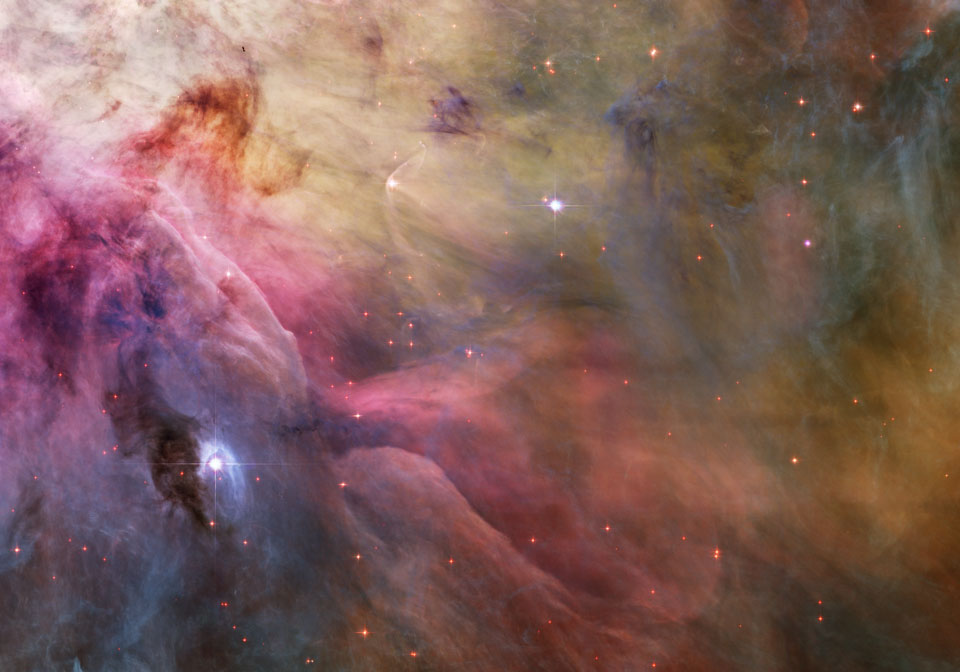
This esthetic close-upof cosmic clouds and stellar windsfeatures LL Orionis, interacting with theOrion Nebula flow.Adrift in Orion'sstellar nurseryand still in its formative years, variable starLL Orionis produces a wind more energetic thanthe wind from our ownmiddle-aged Sun.As the fast stellar wind runs into slow moving gas a shock front isformed, analogous to thebowwave of a boat moving through water ora plane traveling at supersonic speed.The small, arcing, graceful structure just above and left ofcenter is LL Ori's cosmicbow shock, measuring about half a light-year across.The slower gas is flowing away from theOrion Nebula's hot central starcluster, the Trapezium, located off the upper left cornerof the picture.In three dimensions,LL Ori's wrap-around shock front is shaped like abowl that appears brightest when viewed along the "bottom" edge.The beautiful picture is part of alarge mosaic view ofthe complexstellar nursery in Orion, filled with a myriad offluidshapes associated withstar formation.
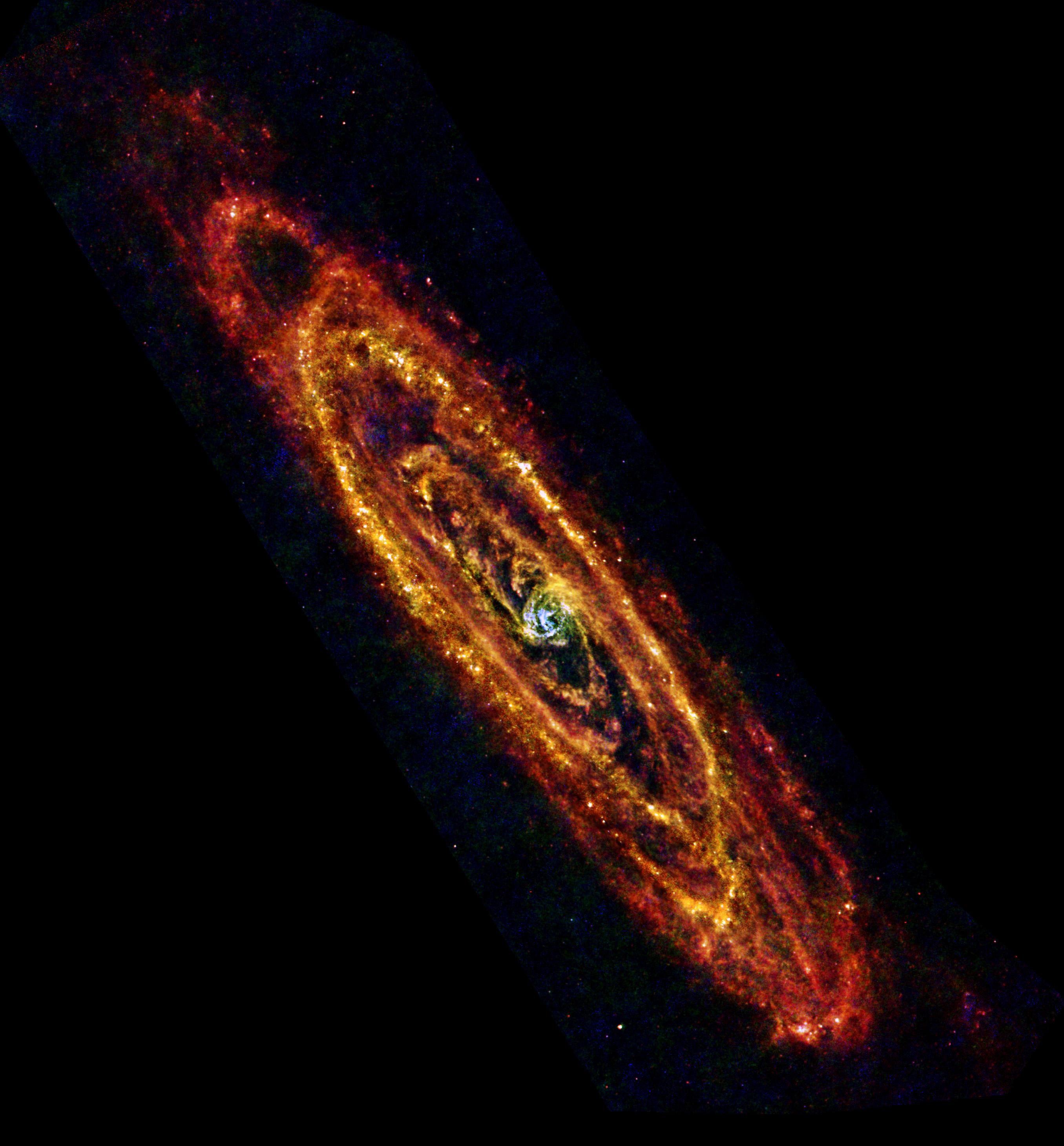
This infrared view from theHerschel Space Observatory exploresthe Andromeda Galaxy, the closest large spiral galaxy toour own Milky Way.Only 2.5 million light-years distant, thefamous island universe is alsoknown to astronomers as M31.Andromeda spansover 200,000 light-years making it more than twicethe size of the Milky Way.Shown in false color,the imagedata reveal the cooldust lanes and clouds that stillshine in theinfrared but areotherwise dark and opaque at visual wavelengths.Red hues near the galaxy's outskirts represent the glow ofdust heated by starlight to a few tens of degrees above absolute zero.Blue colors correspond to hotter dust warmed bystars in the more crowded central core.Also a tracerof molecular gas, the dusthighlights Andromeda's prodigious reservoir of raw material forfuture star formation.
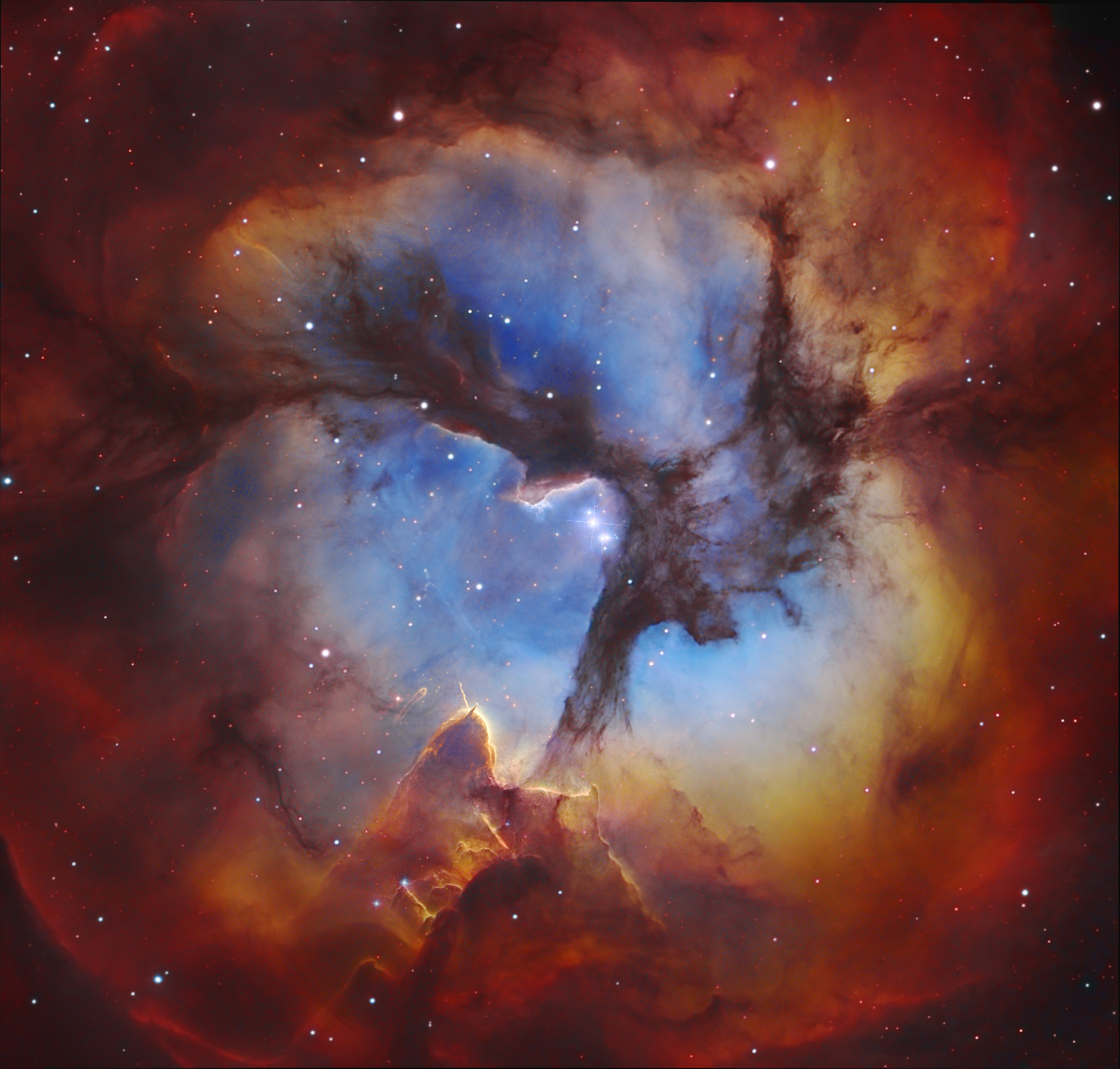
Clouds of glowing gas mingle with dust lanes in the Trifid Nebula, a star forming region toward the constellation of the Archer (Sagittarius). In the center, the three prominentdust lanes that give the Trifid its name all come together.Mountains of opaque dust appear on the right, while other dark filaments of dust are visible threaded throughout the nebula. A single massive starvisible near the center causes much of the Trifid's glow. The Trifid, also known as M20, is only about 300,000 years old, making it among the youngest emission nebulae known. The nebula lies about 9,000 light years away and the partpictured here spans about 10 light years. The above image is a composite with luminance taken from an image by the 8.2-m ground-based Subaru Telescope, detail provided by the 2.4-m orbiting Hubble Space Telescope, color data provided by Martin Pugh and image assembly and processing provided by Robert Gendler.
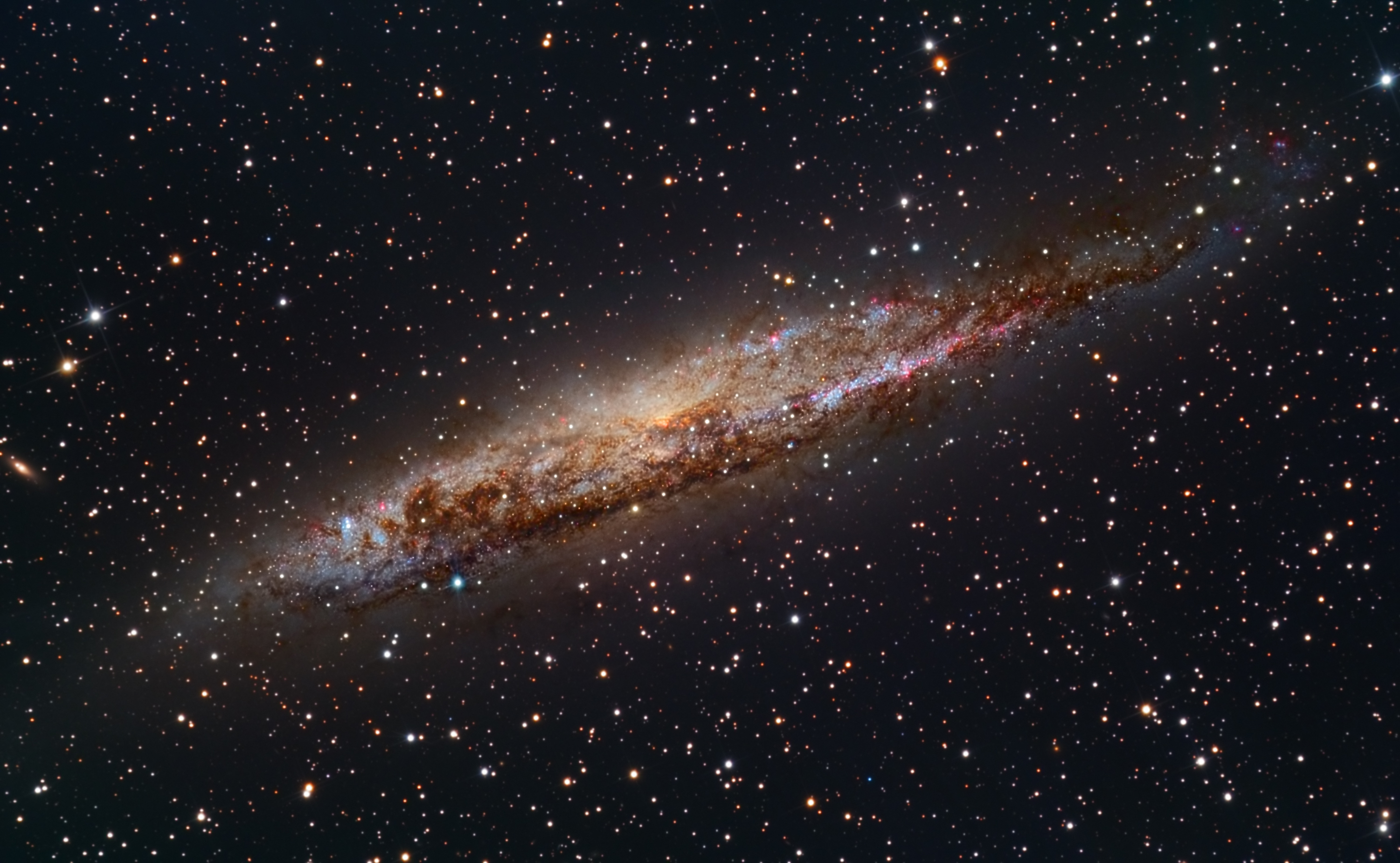
Large spiral galaxy NGC 4945 is seenedge-onnear the center of thiscosmicgalaxy portrait.In fact, NGC 4945 is almost the size of our ownMilky Way Galaxy.Its own dusty disk, young blue star clusters, and pink star formingregions standout in the sharp, colorful telescopic image.About 13 million light-years distant toward theexpansive southernconstellation Centaurus, NGC 4945 is only about six times farther away than Andromeda,the nearest large spiral galaxy to the Milky Way.Though the galaxy's central region is largely hidden fromview for optical telescopes, X-ray and infrared observations indicatesignificanthigh energy emission and star formation in the coreof NGC 4945.Its obscured but active nucleus qualifies the gorgeous islanduniverse as a Seyfert galaxyand likely home to a central supermassive black hole.
|
|
|
|
|
|
|
|
|
|
|
|
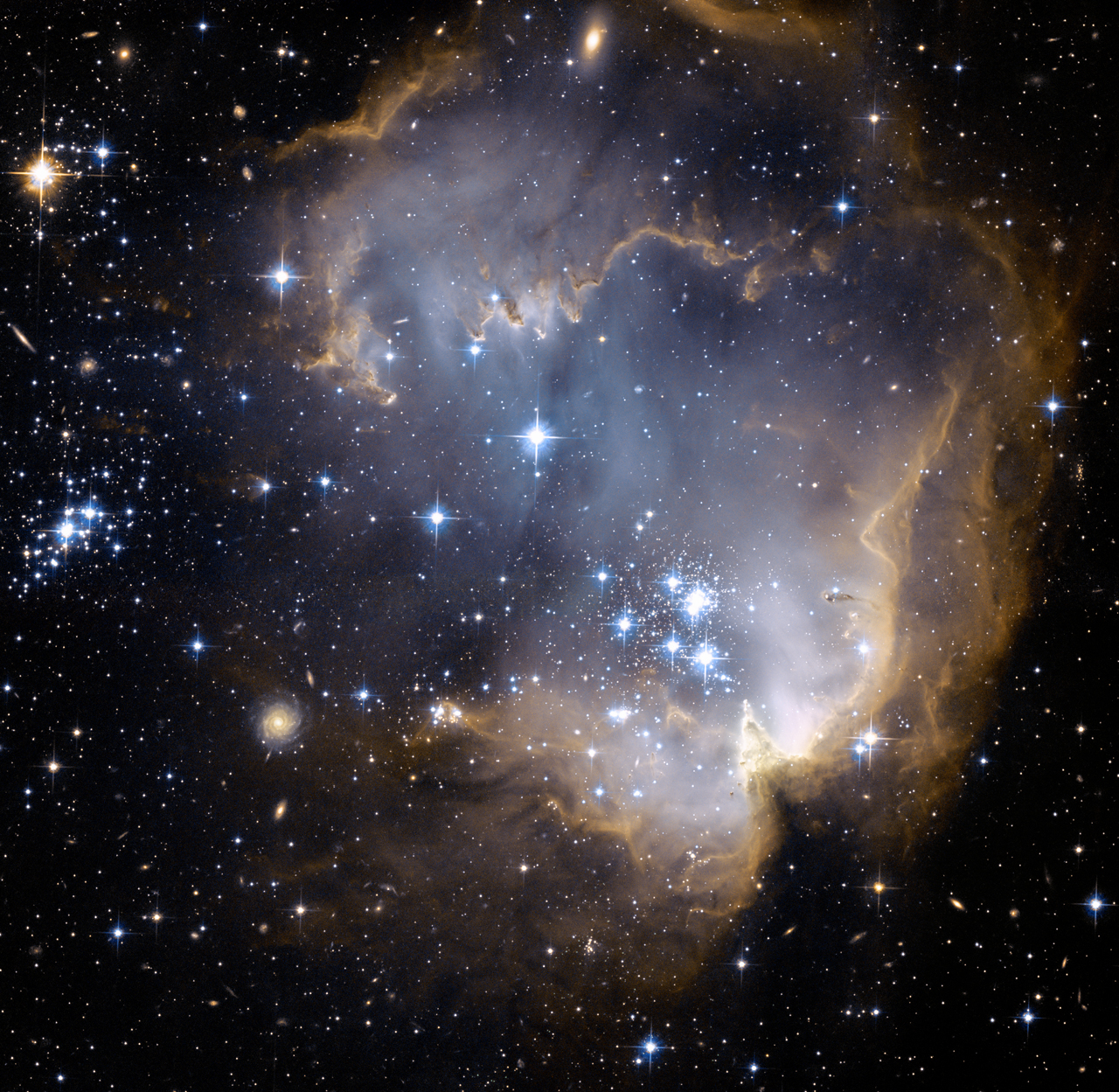
Near the outskirts of the Small Magellanic Cloud,a satellite galaxy some 200 thousand light-years distant,lies 5 million year youngstar cluster NGC 602.Surrounded by natal gas and dust, NGC 602 is featured in this stunning Hubble image of the region. Fantastic ridges and sweptback shapes strongly suggest thatenergetic radiation and shock waves from NGC 602's massiveyoung stars have eroded the dusty material and triggered a progressionof star formation moving away from the cluster's center.At the estimated distance of the Small Magellanic Cloud, thepicture spans about 200 light-years, buta tantalizing assortment ofbackground galaxies are also visible in the sharp Hubble view.The background galaxies are hundreds of millions oflight-years or more beyond NGC 602.
|
|
|
|
|
|
|
|
|
|
| |
Category: Belia & Informasi
|